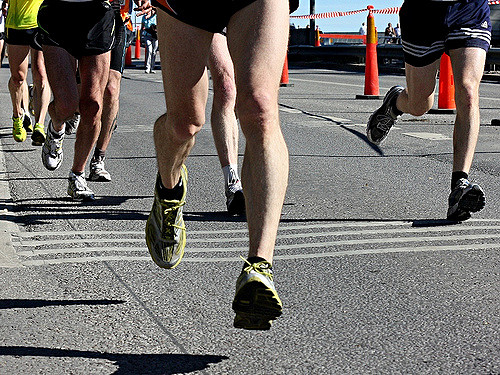 Some people claim that as a type 1 diabetic, you can’t follow a low-carb diet and exercise. Is this the case*?
Some people claim that as a type 1 diabetic, you can’t follow a low-carb diet and exercise. Is this the case*?
For most type 2 diabetics, the advice doesn’t apply. If you don’t take insulin or any blood-glucose level lowering medication, you’re not going to suffer from hypos, where blood sugars dip too low. A low blood sugar is usually defined as below 4mmol (or 70mg/dl in the States). There are no problems following a low-carb diet and exercising.
What happens to you as a type 1 diabetic when you exercise?
Lower AND Raise
Exercise or activity can lower your blood sugar levels. It can also raise them too, just to make life extra complicated. Many people find that intense exercise, such as high-intensity interval training, will temporarily increase blood sugar levels. But the same thing can happen with any activity that makes you huff and puff—a perceived exertion level of hard (15-17 out of 20 on the Borg Scale).
What happens to blood glucose levels also depends on how long you exercise for. Shorter periods of exercise and activity (less than 45 minutes) will not have as much effect as an activity that lasts longer than an hour. Timing is also crucial. When I want to go on a long walk (90 minutes), I usually schedule it for the morning or just after lunch. If I do this, I’m less likely to experience low blood sugars. In the morning, my body is fighting the cortisol spike that raises blood sugar levels. If I go for a walk right after lunch, I don’t take any insulin with my low-carb meal. A long walk will have the same effect as insulin. This might not work if I ate a high-carb meal.
I’m more likely to experience low blood sugars if I exercise in the early evening when my insulin sensitivity is greater anyway.
Basal Rate Reductions
If you know you are going to exercise or be more active than usual, you can lower your basal rate to compensate. With a pump, you can also put on a temporary basal rate reduction an hour or so before you start, keep that on during exercise and for an hour or so afterwards. Or you can switch to a different basal programme for the day.
You will also need to keep an eye on blood sugar levels over the next 24 hours. High-intensity interval training, for example, can lead to a temporary increase, but then a drop in blood sugar levels the next day.
One final point is adaptability. When we first try out a new exercise or activity, it often feels really hard. If you keep it up for a few weeks, what felt difficult soon becomes okay as your body become more efficient. So, a 30-minute spin class, for example, that might have given you a dramatic blood sugar level drop the first time you did it, has minimal effects five weeks later.
There are so many variables to type 1 diabetes, blanket statements such as “you can’t exercise and eat low-carb” do not apply to everyone. It’s challenging, yes, but if you know your body, you’ll know what exercise and activity you can do, when you can do it and how much to do if you want to avoid hypos. Like everything else, personal experience and logging what happens to you during exercise will help.
*The usual disclaimer applies. My opinions don’t constitute advice for other people. If you want to exercise and follow a low-carb diet, you will need to experiment to find out what works for you. If you go to classes or use a gym, make sure the instructors are aware that you have type 1 diabetes and always carry your testing equipment and fast-acting carbs, such as jelly babies, with you.
Reblogged this on HELP Eat RAW and commented:
Exercise and a Low-Carb Diet
Posted on April 8, 2017 by EMMA
LikeLike
Thank you!
LikeLike